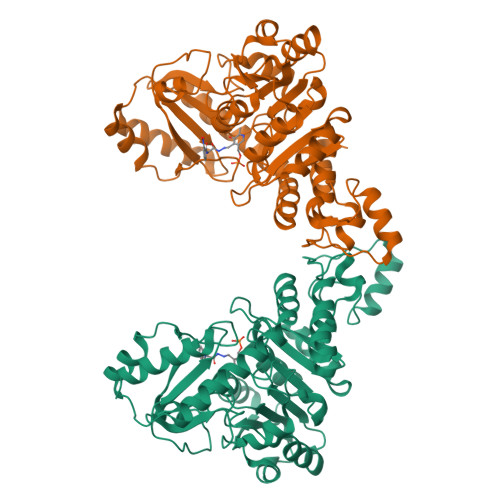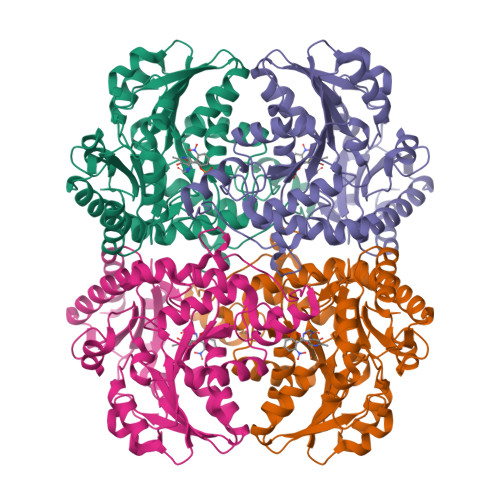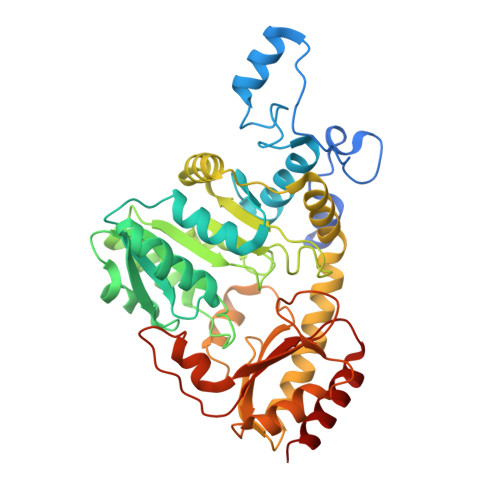Inhibitors of Bacterial Cystathionine beta-Lyase: Leads for New Antimicrobial Agents and Probes of Enzyme Structure and Function.
Ejim, L.J., Blanchard, J.E., Koteva, K.P., Sumerfield, R., Elowe, N.H., Chechetto, J.D., Brown, E.D., Junop, M.S., Wright, G.D.(2007) J Med Chem 50: 755-764
- PubMed: 17300162
- DOI: https://doi.org/10.1021/jm061132r
- Primary Citation of Related Structures:
2FQ6, 2GQN - PubMed Abstract:
The biosynthesis of methionine is an attractive antibiotic target given its importance in protein and DNA metabolism and its absence in mammals. We have performed a high-throughput screen of the methionine biosynthesis enzyme cystathionine beta-lyase (CBL) against a library of 50 000 small molecules and have identified several compounds that inhibit CBL enzyme activity in vitro. These hit molecules were of two classes: those that blocked CBL activity with mixed steady-state inhibition and those that covalently interacted with the enzyme at the active site pyridoxal phosphate cofactor with slow-binding inhibition kinetics. We determined the crystal structure of one of the slow-binding inhibitors in complex with CBL and used this structure as a guide in the synthesis of a small, focused library of analogues, some of which had improved enzyme inhibition properties. These studies provide the first lead molecules for antimicrobial agents that target cystathionine beta-lyase in methionine biosynthesis.
Organizational Affiliation:
Antimicrobial Research Centre, McMaster High Throughput Screening Laboratory, Department of Biochemistry and Biomedical Sciences, McMaster University, Ontario L8N 3Z5, Canada.



















